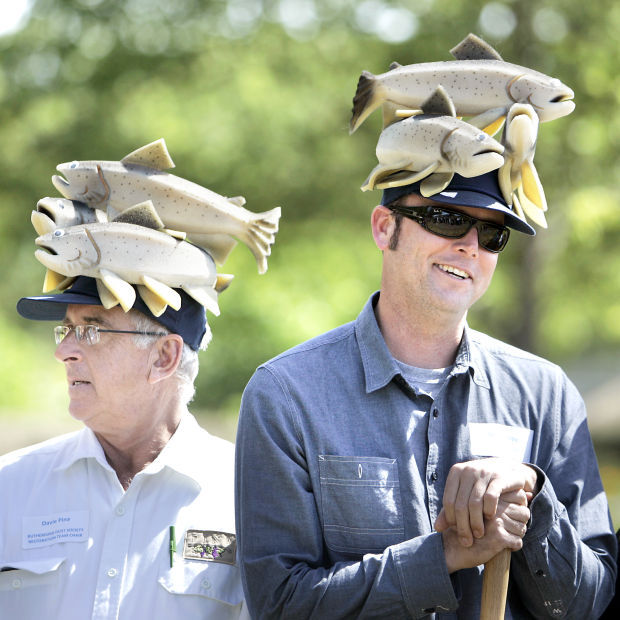Major beaver victory in Ontario, Canada this morning:
Hamilton Conservation Authority creates new protocol to let Fifty Point beavers be
A new protocol for dealing with wildlife conflicts at local conservation areas will leave beavers at Fifty Point alone unless they wreak major havoc.
Set to go to Hamilton Conservation Authority directors for approval in May, the protocol only allows lethal trapping as a last resort in cases where beavers are a significant threat to health and safety, property or the natural environment.
Directors placed a moratorium on lethal trapping last May after a Fifty Point neighbour’s discovery of a dead muskrat and injured snapping turtle in two beaver traps in the park’s trout pond created a public outcry.
He said if beavers aren’t creating an immediate flood risk, park staff will simply monitor their impact and if necessary consider habitat modifications, like fencing trees and modifying culverts so they can’t be blocked.
If beavers have built a dam that is a flood threat, depending on the situation the authority may remove it or try less intrusive measures, like installing a flow device to restore normal water levels, the told the authority’s conservation advisory board.
“Humane, lethal trapping is the last resort if you’ve got acute significant issues and the other approaches you’ve tried are not successful,” Stone said. “Generally, our preference is to leave wildlife alone.”
Go Hamilton! Fifty Point is an actual place, for a while I was reading this headline as if it meant fifty beavers at point! I had to hunt all over to find who’s responsible for this bit of beaver magic, but it turns out Hamilton is the home town of the Digital Director of content and the voice behind the radio at Fur Bearer Defenders, Michael Howie. So I’m not at all surprised they could will this into happening. Here’s their article on the victory.
The issue arose last year when a resident was out for a walk and came across a muskrat and an at-risk snapping turtle in beaver traps. The Fur-Bearers (and our wonderful supporters) spoke with the media, the Conservation Authority, and local politicians about non-lethal solutions following that news; it would appear the decision makers liked what they heard.
 Last night I received the completely unexpected request for photo use from Demitrios Kouzios, a dedicated Cubs fan from Chicago who said he tweeted a beaver picture from our website and wanted to pay for its use. The photo was this, (hahaha) which I replied wasn’t ours, wasn’t a beaver and wasn’t even alive. Which he was thrilled to hear. He thanked me heartily and this morning donated $100 to Worth A Dam! Go Cubs!
Last night I received the completely unexpected request for photo use from Demitrios Kouzios, a dedicated Cubs fan from Chicago who said he tweeted a beaver picture from our website and wanted to pay for its use. The photo was this, (hahaha) which I replied wasn’t ours, wasn’t a beaver and wasn’t even alive. Which he was thrilled to hear. He thanked me heartily and this morning donated $100 to Worth A Dam! Go Cubs!
Then Robin of Napa pointed me to me this article on wildlife and traffic in the chronicle, reporting a study by the very group we featured this week. It also tells you where the danger spots are here in the Bay Area.
Mapping roadkill hot spots across a bloody state
Californians, with their famous love of the highway, tend to run over a lot of animals — raccoons, deer, desert iguana. But the danger for road-crossing critters may be rising with the drought.
A UC Davis study released Wednesday, which seeks to promote safety for both wildlife and motorists, identifies stretches of California asphalt where the most animals have been hit — and where more are likely to die in the baking sun as they extend their ranges in search of water.
 Finally, in case you forgot to watch Nature last night there was unbelievably adorable footage of beaver kits in the lodge in winter. You will miss out on something truly special if you don’t go watch it right now. Beavers appear at the beginning and the end (the Alpha and the Omega as it were) but it’s all good. Ann Prum did a great job, although not better than our friend Jari Osborne who was prescient enough to just focus on beavers! Enjoy!
Finally, in case you forgot to watch Nature last night there was unbelievably adorable footage of beaver kits in the lodge in winter. You will miss out on something truly special if you don’t go watch it right now. Beavers appear at the beginning and the end (the Alpha and the Omega as it were) but it’s all good. Ann Prum did a great job, although not better than our friend Jari Osborne who was prescient enough to just focus on beavers! Enjoy!




















































